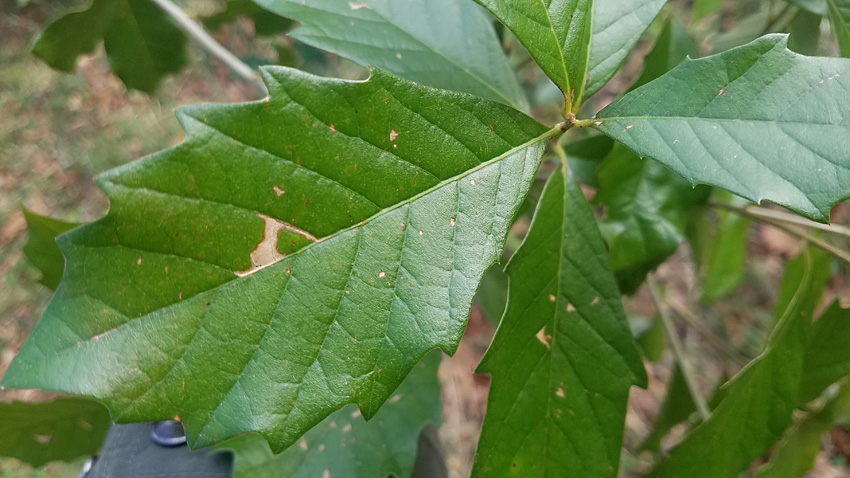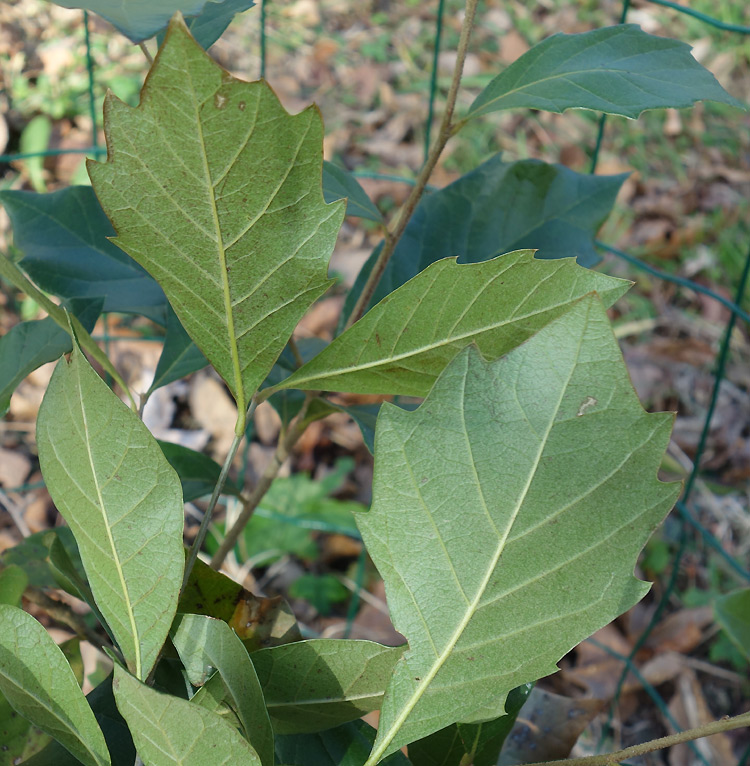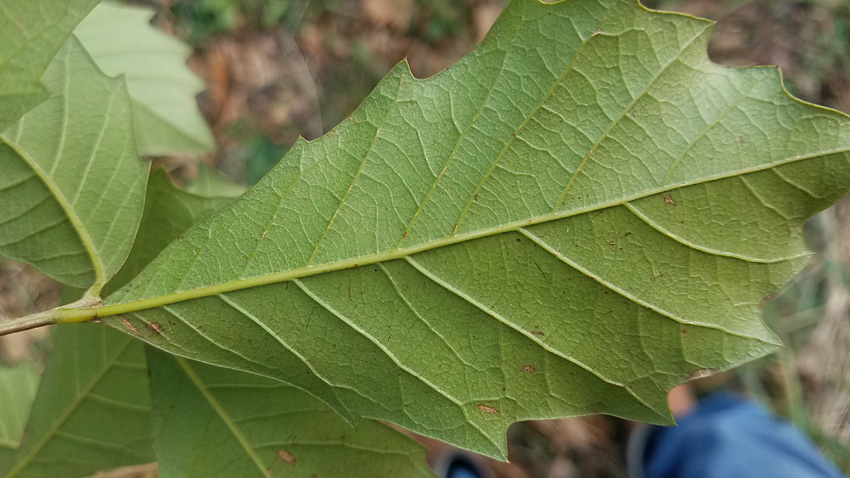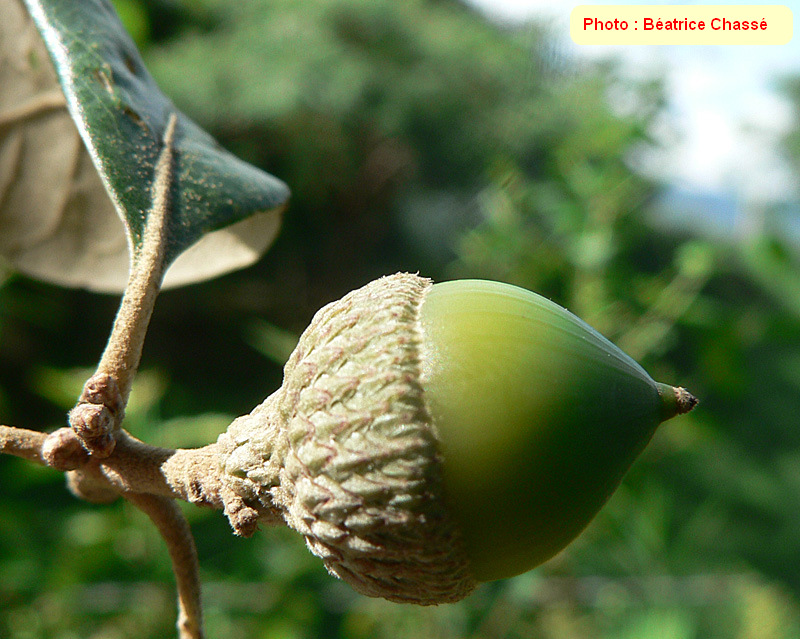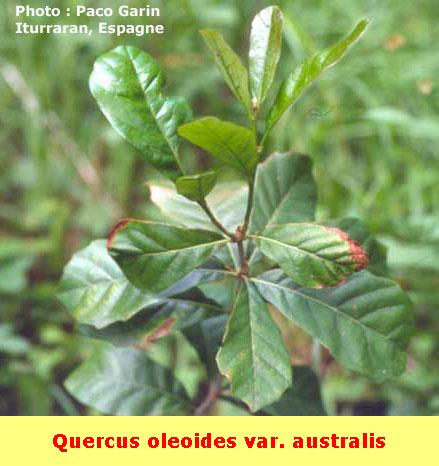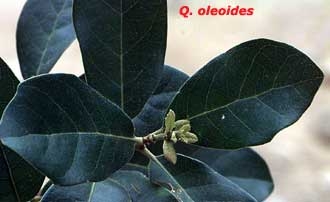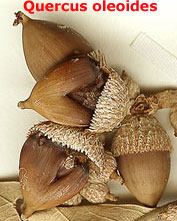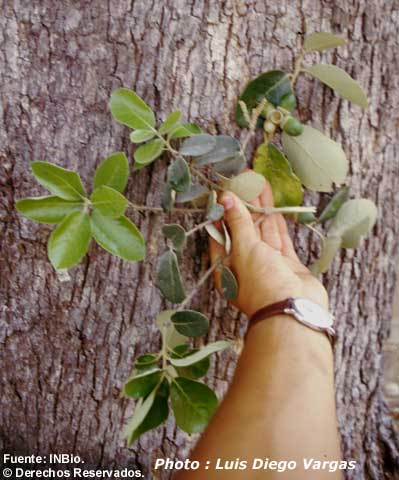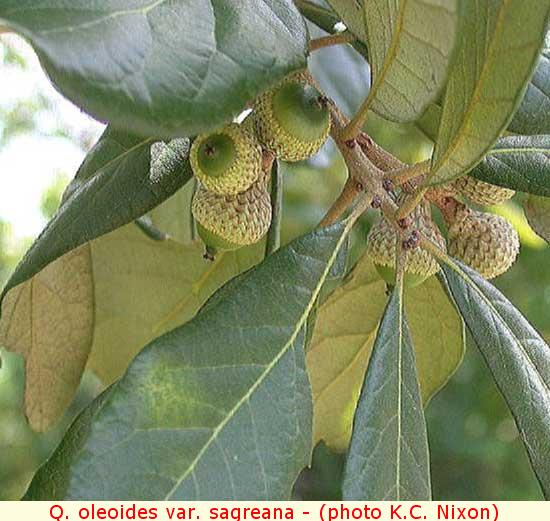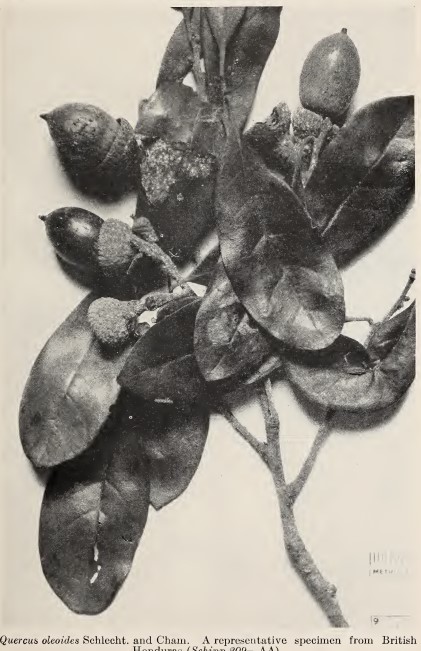| Quercus oleoides | |
| Author | Schltdl. & Cham. 1830 Linnaea 5: 79 |
| Synonyms | virens A.DC pro parte lutescens Mart. & Gal. 1843 . oleoides fo. lutescens (Mart. & Gal. ) Trel. 1924 oloides var. australis Trel.1924 (A. Camus : 171) retusa Liebm. 1854 |
| Local names | encino
tesmosl; tresmoles; |
| Range | Mexico
(Campeche, Vera Cruz, Chiapas, Hidalgo, Oaxaca, Puebla, Queretaro, San
Luis Potosi, Tamaulipas, Tabasco, Yucatan); Central America (Costa Rica,
Belize, Guatemala, Honduras, Nicaragua); Texas; 150-1100 m; |
| Growth habit | 5-10 m tall usually, but may reach 30 m, with trunk 50-70 cm in diameter; sometimes shrub 1-3 m tall; crown dense, branched; cylindrical trunk; |
| Leaves | 3-8
x 1,5-4 cm; deciduous; elliptic or rhombic, oboval to oblanceolate; leathery;
apex round or obtuse, seldom acute, mucronate; base attenuate, sometimes
slightly cuneate; margin thickened, slightly revolute, entire or sometimes
with 1-4 pairs of mucronate teeth in apical half (leaves of young plants
are likely dentate from just above the base); olive-green, slightly lustrous
above, hairless or with scarce stellate trichomes toward the base of the
blade; yellowish grey to brownish-grey beneath, densely covered with stellate,
appressed, short trichomes (observed only under a microscope , and appearing
glabrous to naked eye); 5-8 vein pairs, impressed above, raised beneath;
épidermis papillose; petiole 4-12 mm long, yellowish, pubescent;
|
| Flowers |
May; staminate inflorescences glabrous, 2-4 cm long; pistillate inflorescences
2-4 cm, bearing 2-3 flowers; |
| Fruits | acorn
1.5 to 2.5 cm long, 1-1.2 cm in diameter; broadly elliptic, mucronate;
shiny dark brown at maturity (pale green when young); hairless; singly
or paired; sessile or on a peduncle 1-4 cm long; enclosed 1/3 by cup;
cup half-round or obconical to turbinate, 1-1.5 cm in diameter, with free
tomentose scales; |
|
Bark, twigs and |
bark dark grey brown, thick, rough; twigs 1.5-3 mm in diameter, densely stellate tomentose at first, becoming glabrescent, yellowish, with pale inconspicuous lenticels; buds subglobose or ovoid, 1.5-3 mm; |
| Hardiness zone, habitat | not hardy; fire-resistant; prefers hot, dry soils; not very fast-growing; tropical evergreen forests; |
| Miscellaneous | -- A. Camus : n°
170 ; -- Sub-genus Quercus, Section Virentes; -- Close to to Q. fusiformis with which a confusion is possible, but Q. fusiformis has narrowly oval or lanceolate or oblong leaves, and an acorn spindle-shaped; -- Most often, Q. oleoides occurs at lower altitudes than any other species in the genus. It is considered a species of tropical distribution. |
| Subspecies and varieties |
--
Some authors (C.H. Muller) think that the variety sagraeana of
Q.cubana
is actually a variety of Q.oleoides. |
| Pictures |
|
